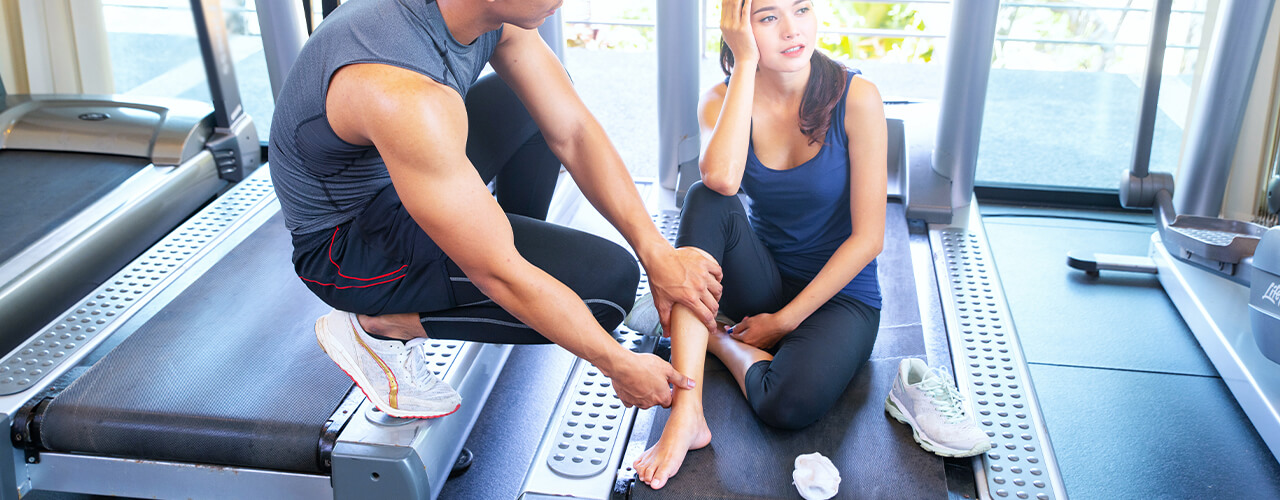The best advice you can hear to treat hip and knee pain is this – there are exercises that strengthen your lower back muscles. When it comes to lower back muscle aches, the primary reason for it will be due to the weakening of this group of muscles.
It is also important to stay physically active because not only does it strengthen your leg muscles but it also helps in lowering the risks of getting injured or suffering from arthritis (which affects majorly on your hips and knees).
Exercise for stronger knees and hips
Exercise is more than just a good habit for your health; it is also a specific and effective treatment for many knee and hip problems. Muscle strength around a damaged knee or hip can help support that joint by taking on some of its responsibilities. For example, if your quadriceps, gluteals, hamstrings, and abdominal muscles are stronger, your hips will have to do less work to support your body weight. A strong quadriceps can take over the shock-absorbing role that the meniscus or cartilage in the knee normally plays.
A proper balance of muscle strength can keep the joint in the most functional and least painful position. With any knee or hip problem, the first muscles to lose strength are the largest antigravity muscles, the quadriceps and glutes, so an exercise plan for any injury is likely to focus on these.
Muscles work in pairs, with one contracting while the other relaxes. When you straighten your knee, for example, your quadriceps on the front of your thigh contract while your hamstrings on the back relax. Imbalances in the function of paired muscles can lead to joint issues and injury. If your hamstrings are tight, your quadriceps will be unable to fully contract and may weaken, so exercise both the quadriceps and the hamstrings (opposing muscles) equally. Flexibility exercises (to stretch and relax specific muscles) are an important part of a joint-healthy exercise program.
Closed-chain exercising. Physical therapists have emphasized the distinction between open-chain and closed-chain exercises. The chain referred to is a series of body parts, such as a hip, knee, ankle, and foot.
The body remains stationary while the limb moves in an open-chain exercise. The limb remains stationary while the body moves in closed-chain exercise. A squat, for example, is a closed-chain exercise because your feet remain stationary while your quadriceps perform the work. A seated leg extension, on the other hand, is an open-chain maneuver because your seated body is still, but your leg moves as you extend it.
Open-chain exercises may be more effective for specific therapeutic goals, such as increasing quadriceps strength following ACL injury. However, physical therapists are incorporating more closed-chain exercises into rehabilitation programs and recommending them to people with painful joints because they involve more muscles and joints and help to create stability around a joint.
Exercising with a physical therapist
Physical therapy is frequently used in the treatment of arthritis and other joint problems. A physical therapist customizes your treatment plan to restore or maintain your physical functioning and follows specific orthopedist instructions.
The therapist will first thoroughly assess your pain, functional ability, strength, and endurance. Pain-relieving treatments such as ice, heat, massage, or other methods may be used during a physical therapy session. The physical therapist supervises your exercise sessions and teaches you exercises that you can do at home. Depending on the therapy center, a pool (see box) and a variety of exercise equipment may be available.
Gait retraining. Knee and hip problems can disrupt your normal walk by causing pain, restricting joint movement, or weakening muscles. A person’s usual pattern of standing, walking, or running may also invite joint problems if weakness in key muscles, poor coaching advice, or bad habits throw off the gait.
It could take many years of walking with an abnormal gait before a joint is injured. Improper running causes more pain and injury because it involves more force with each stride.
A physical therapist examines your gait and teaches you how to walk normally. The proper gait may feel strange at first; you will most likely need practice and ongoing instruction before it becomes comfortable. The physical therapist may advise you to change your shoes or perform specific exercises to strengthen muscles that you are attempting to avoid using.
If you’ve had a knee or hip replacement, gait retraining can help you relearn how to stand up straight (the natural tendency is to lean toward your operated leg) and use both legs equally. Gait retraining can start in the pool, where the buoyancy of the water takes weight off the joint, making it easier to stand up straight and reducing fear of falling.
Everyone into the pool!
Water exercise has several advantages:
- The water supports your weight, reducing joint stress.
- You can practice exercises before attempting them on solid ground.
- A pool heated to 85 degrees Fahrenheit is ideal for exercise and relieves joint pain.
- You can improve your range of motion and endurance without exerting too much effort or causing joint pain.
Are You Looking for Relief for Your Hip and Knee Pain?
Pace Physical Therapy in San Jose, California specializes in non-surgical relief and recovery therapies for injuries. Our physical therapists in San Jose, CA are movement professionals who can help you heal easily and accomplish your physical goals. Do your knees feel sore, or do they feel as if, without warning, they could buckle under you? Do sharp hip pains find it hard to get up in the morning, walk about during the day, and lay down at night? Hip joint pain and knee pain, especially if you’re dealing with both, can seriously interfere with your life. Whatever could be uncomfortable for you, physical therapy may help you get safely and easily to the source of your problem without the need for harmful drugs or surgery. To alleviate your hip and knee pain entirely, make an appointment with Pace Physical Therapy in San Jose, CA, saving you the need for potentially harmful medicine or surgical correction. We strive every day to provide excellent service for all our patients because we understand it can be frustrating not being able to do what you love most due to an injury keeping us off the field or court! Contact us today to schedule your appointment!



